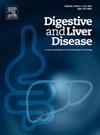Evolution during the last 20 years, before and after the introduction of DAA, of the characteristics and comorbidities of patients on the waiting list for liver transplantation in a single center
IF 3.8
3区 医学
Q1 GASTROENTEROLOGY & HEPATOLOGY
引用次数: 0
Abstract
Background
The rising prevalence of metabolic syndrome and the decline in HCV rates due to Direct-Acting Antivirals (DAAs) have reshaped the liver transplantation (LT) landscape, leading to more complex evaluations and increased resource needs. The Charlson Comorbidity Index (CCI) has been proposed as a predictor of post-LT outcomes.
Aims
to evaluate the impact of epidemiological changes on WL composition, comparing etiology and comorbidities in the pre- and post-DAA eras.
Methods
We analyzed all consecutive patients listed for LT from 2005 to 2024, dividing them into pre-DAA (2005–2014) and post-DAA (2015–2024) eras. CCI was calculated for patients with available data on nine comorbidities: diabetes, stroke, coronary artery disease, chronic kidney disease, COPD, peripheral vascular disease, connective tissue disease, congestive heart failure, and prior extrahepatic malignancies. CCI considered categories were 0, 1–2, and >3.
Results
We analyzed 648 patients: 55% (n=358) pre-DAA and 45% (n=290) post-DAA. Post-DAA patients were older and had higher median MELDNa scores [54.4 (47.9–60.3) vs 56.9 (49.1–63), p=0.003] and [16 (12–21) vs 17 (13–24), p=0.033]. HCC prevalence was similar. Metabolic dysfunction–associated steatotic liver disease (MASLD) was more common post-DAA (41% vs 24%, p<0.0001), while HCV was less frequent (24% vs 35%, p=0.001). Other etiologies showed no significant differences. CCI was available for 313 pre-DAA and 290 post-DAA patients. Higher CCI scores were significantly associated with MASLD (p<0.0001), older age (p<0.0001), and were more common post-DAA (CCI 0 in 47% vs 52%, CCI 1–2 in 40% vs 32%, and CCI >3 in 18% vs 11% p=0.001).
Conclusion
WL composition changed substantially over 20 years, with nearly doubled MASLD prevalence and greater disease severity. Increased extrahepatic comorbidities are probably due to older age and higher metabolic syndrome rates. These trends imply greater demands for pre-transplant assessment and potentially worse post-transplant outcomes.
在过去20年中,在引入DAA之前和之后,在单个中心等待肝移植的患者的特征和合并症的演变
直接作用抗病毒药物(DAAs)导致代谢综合征患病率的上升和HCV发病率的下降已经重塑了肝移植(LT)的格局,导致更复杂的评估和更多的资源需求。Charlson共病指数(CCI)已被提出作为肝移植后预后的预测指标。目的评价流行病学变化对WL组成的影响,比较daa前后的病因和合并症。方法对2005 - 2024年所有连续接受肝移植的患者进行分析,将其分为daa前(2005 - 2014)和daa后(2015-2024)两个阶段。CCI是针对有9种合并症数据的患者计算的:糖尿病、中风、冠状动脉疾病、慢性肾脏疾病、慢性阻塞性肺病、周围血管疾病、结缔组织疾病、充血性心力衰竭和既往肝外恶性肿瘤。CCI考虑的分类为0、1-2和>;3。结果我们分析了648例患者:55% (n=358)为daa前患者,45% (n=290)为daa后患者。daa后患者年龄较大,MELDNa中位评分较高[54.4 (47.9-60.3)vs 56.9 (49.1-63), p=0.003]和[16 (12-21)vs 17 (13-24), p=0.033]。HCC患病率相似。daa后代谢功能障碍相关脂肪变性肝病(MASLD)更为常见(41%对24%,p= 0.0001),而HCV发病率较低(24%对35%,p=0.001)。其他病因无显著差异。313例daa前患者和290例daa后患者可获得CCI。较高的CCI评分与MASLD (p = 0.0001)、年龄(p = 0.0001)显著相关,并且在daa后更为常见(CCI为0的比例为47% vs 52%, CCI为1-2的比例为40% vs 32%, CCI为3的比例为18% vs 11% p=0.001)。结论:20年来wl组成发生了很大变化,MASLD患病率几乎翻了一番,疾病严重程度更高。肝外合并症的增加可能是由于年龄较大和代谢综合征发生率较高。这些趋势意味着对移植前评估的需求更大,移植后结果可能更差。
本文章由计算机程序翻译,如有差异,请以英文原文为准。
求助全文
约1分钟内获得全文
求助全文
来源期刊

Digestive and Liver Disease
医学-胃肠肝病学
CiteScore
6.10
自引率
2.20%
发文量
632
审稿时长
19 days
期刊介绍:
Digestive and Liver Disease is an international journal of Gastroenterology and Hepatology. It is the official journal of Italian Association for the Study of the Liver (AISF); Italian Association for the Study of the Pancreas (AISP); Italian Association for Digestive Endoscopy (SIED); Italian Association for Hospital Gastroenterologists and Digestive Endoscopists (AIGO); Italian Society of Gastroenterology (SIGE); Italian Society of Pediatric Gastroenterology and Hepatology (SIGENP) and Italian Group for the Study of Inflammatory Bowel Disease (IG-IBD).
Digestive and Liver Disease publishes papers on basic and clinical research in the field of gastroenterology and hepatology.
Contributions consist of:
Original Papers
Correspondence to the Editor
Editorials, Reviews and Special Articles
Progress Reports
Image of the Month
Congress Proceedings
Symposia and Mini-symposia.
 求助内容:
求助内容: 应助结果提醒方式:
应助结果提醒方式:


